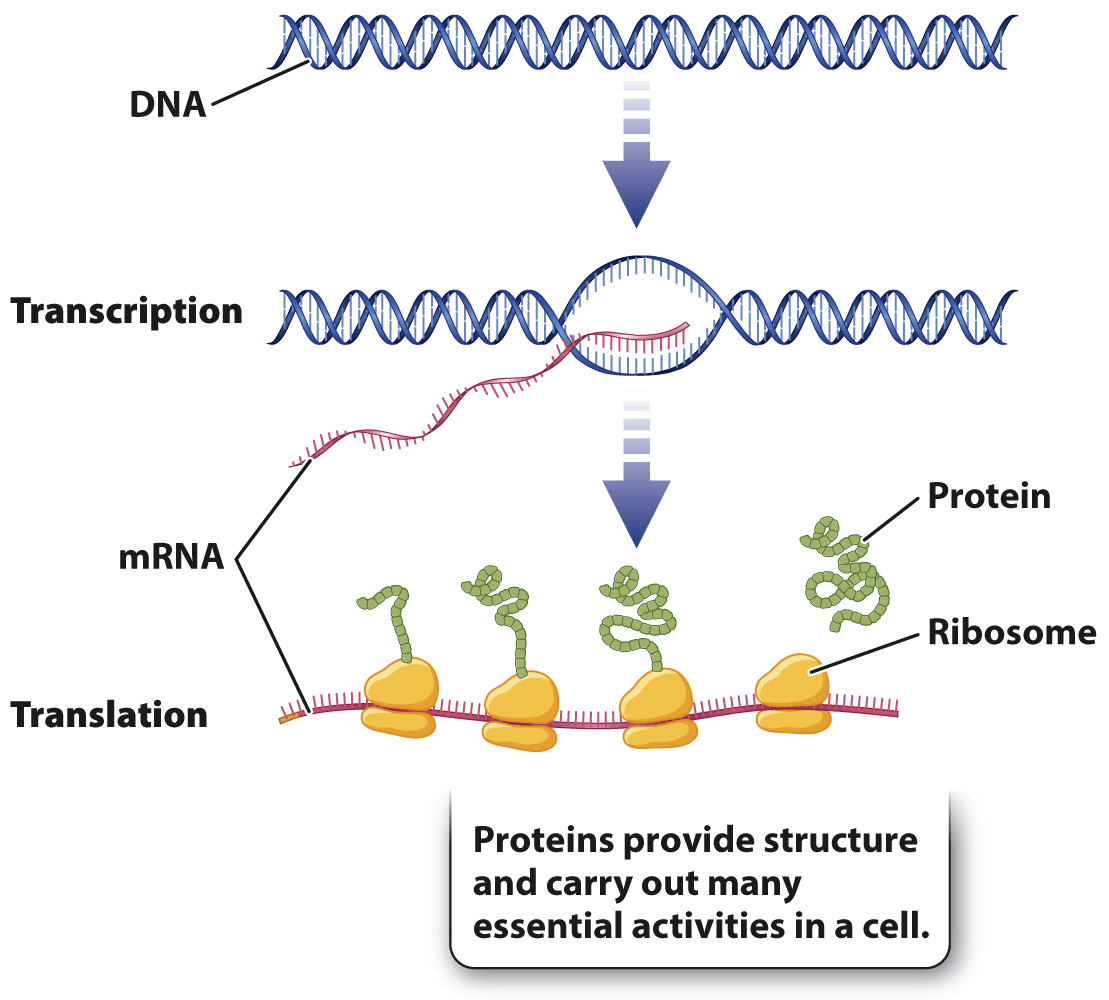Genetic information flows from DNA to RNA to protein.
Biologists often say that genetic information in DNA directs the activities in a cell or guides the development of an organism, but these effects of DNA are indirect. Most of the active molecules in cells and development are proteins, including the enzymes that convert energy into usable forms and the proteins that provide structural support for the cell. DNA acts indirectly by specifying the sequence of amino acid subunits of which each protein is composed, and this sequence in turn determines the three-
52
In specifying the amino acid sequence of proteins, DNA acts through an intermediary molecule known as ribonucleic acid (RNA), another type of linear polymer. As we saw in Chapter 1, the flow of information from DNA to RNA to protein has come to be known as the central dogma of molecular biology (Fig. 3.3). The central dogma states that genetic information can be transferred from DNA to RNA to protein. Through the years, some exceptions to this “dogma” have been discovered, including the transfer of genetic information from RNA to DNA (as in HIV, which causes AIDS), from RNA to RNA (as in replication of the genetic material of influenza virus), and even from protein to protein (in the unusual case of disease-

The first step in this process is transcription, in which the genetic information in a molecule of DNA is used as a template, or pattern, to generate a molecule of RNA. The term “transcription” is used because it emphasizes that both molecules use the same language of nucleic acids. Transcription is the first step in gene expression, which is the production of a functional gene product. The second step in the readout of genetic information is translation, in which a molecule of RNA is used as a code for the sequence of amino acids in a protein. The term “translation” is used to indicate a change of languages, from nucleotides that make up nucleic acids to amino acids that make up proteins.
The processes of transcription and translation are regulated, meaning that they do not occur at all times in all cells, even though all cells in an individual contain the same DNA. Genes are expressed, or “turned on,” only at certain times and places, and not expressed, or “turned off,” at other times and places. In multicellular organisms, for instance, cells are specialized for certain functions, and these different functions depend on which genes are on and which genes are off in specific cells. Muscle cells express genes that encode for proteins involved in muscle contraction, but these genes are not expressed in skin cells or liver cells, for example. Similarly, during development of a multicellular organism, genes may be required at certain times but not at others. In this case, the timing of expression is carefully controlled.
53
In prokaryotes, transcription and translation occur in the cytoplasm, but in eukaryotes, the two processes are separated from each other, with transcription occurring in the nucleus and translation in the cytoplasm. The separation of transcription and translation in time and space in eukaryotic cells allows for additional levels of gene regulation that are not possible in prokaryotic cells. In spite of this and other differences in the details of transcription and translation between prokaryotes and eukaryotes, the processes are sufficiently similar that they must have evolved early in the history of life.